These highlights chronicle the year 2024. The year runs generally
"backwards" on this page. In crediting records of vagrant or unusual birds, I always try to credit the finder(s) of the rarity. There will be times when complications arise with credit (e.g., one or more observers find a bird but others are the ones to actually identify it). There are times when a bird is properly identified only days later after photo review.
These summaries are not meant to be a "complete" record of birds of interest in MTY in any season — the reports forwarded to the Seasonal Editors of North American Birds magazine are intended to fill that niche — but, rather, these pages are of highlights of a portion of the year that were documented, in most cases, with photos.
The abbreviation "MTY" means "Monterey County"
in the text below. Text by Don Roberson. Photos on this page
are copyrighted by the photographers to whom they are
attributed, and may not be reproduced in any form (including
other web sites) without the express consent of the photographer. |
| |
 |
 |
Late spring migration may bring "eastern vagrants" to California. The best this year was a Dickcissel at Pacific Grove cemetery 11 May (Mark Kudrav, ph left © Mark Chappell) — the first spring record for MTY. Other spring rarities included a Broad-winged Hawk over Carmel Valley Village on 22 May (ph above © Paul Fenwick); three Tennessee Warbler — from a boat on Monterey Bay 10 May (Kevin Lester), Carmel Middle School 11 May (plus a Cassin's Finch; B.L. Sullivan), and Big Sur R. mouth 17 May (Karen Kreiger); a male Hooded Warbler in a Pacific Grove yard (Rita Carratello, Don Roberson); two singing Northern Parula (Pt. Lobos 28 May (Daniel George) and Fisherman Flat, Monterey, 4 June (Cooper Scollan); a singing Ovenbird at Quarry Park, Monterey, 4 June (Michael Rieser); four Indigo Bunting in lower Carmel Valley 11 May-30 June; and a male Rose-breasted Grosbeak in P.G. yard from 24-27 June (ph right © Rita Carratello). |
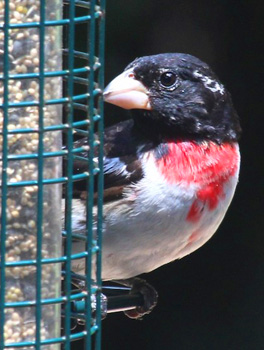 |
|
|
| |
|
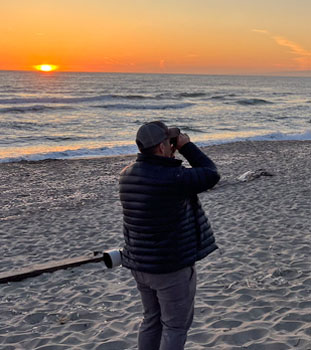 |
When the sun set on Zmudowski State Beach on 28 April 2024, Monterey County had a new Big Day record, set by Paul Fenwick (left; ph by B.L. Sullivan) and Brian L. Sullivan (right; ph by Paul Fenwick). They had started before dawn in remote southeastern MTY (top photo above © B.L. Sullivan) and birded non-stop to dark, existing on cold pizza during the daylight hours (second photo above, © Paul Fenwick).
Brian and Paul both have homes near Carmel Valley Village, and have been running a Big Day route that incorporates a fair bit of Carmel Valley Road, including the watershed summit (photo below © B.L. Sullivan). From that site, one can see the Arroyo Seco watershed (behind Paul) and the Carmel River watershed. On this Big Day, two migrant Ospreys were an unexpected surprise here. |
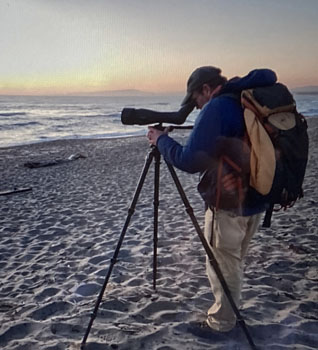 |
|
Brian writes:
"After many years of running this route, a bit of fine-tuning, tweaking, and good luck helped produce this record count. Overall, the southern section was flawless, with all the regular breeding birds showing up and a few winter birds lingering long enough to get on the list. The central portion of the route is also more streamlined now, and we got lucky with the rarer river birds at the few places along the route where we have a chance to scan the river. The coastal portion of the route was likewise excellent today, though light winds made sea-watching a challenge. Those same light winds made for a beautiful evening in the Moss Landing/Elkhorn Slough area, where the number of birds was astounding. Highlights included: great lingering waterfowl including a surprise male Canvasback, 4 Ring-necked Ducks, and all three scoters; 4 falcon species including a spectacular Merlin chase with thousands of peeps at Elkhorn Slough; and a surprise Swainson's Hawk near King City."
|
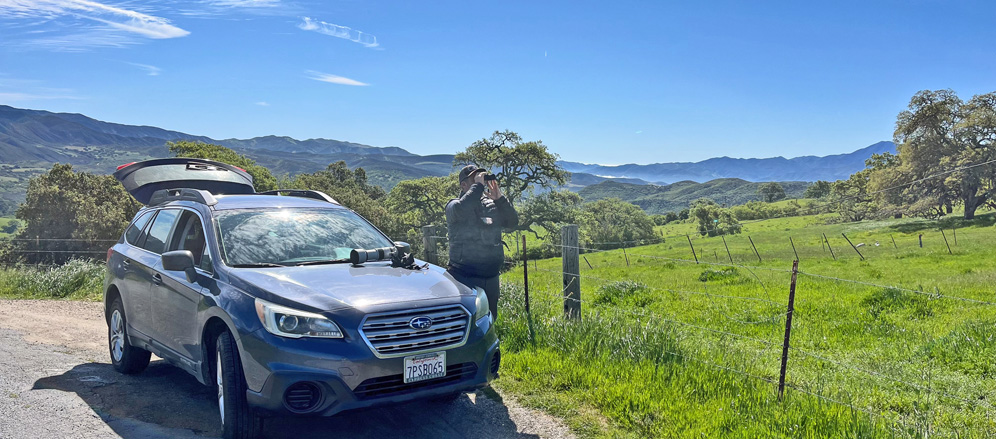 |
Their 2024 effort is now is the highest Big Day in Monterey County. Congratulations on this record achievement!
The table below sets out a compilation (bottom to top) of formal ABA Big Day Rules in Monterey County that either broke preceding records or had 200 or more species for the Day. ABA Rules require that a team (minimum 2 observers) stay in voice contact with each other throughout the day in one vehicle; that >95% of species must be identified by all of the team; that they receive no help by others during the day; and that they use no audio playback to get birds to vocalize [part of Big Day rules in 20th century; Brian & Paul used no playback in 2024, making their effort comparable with even the oldest MTY Big Days]. These rules make it possible to make comparisons of Big Days over time.
As you can see, the first record back in 1981 had 196 species and the new record is 221 species — a 25-bird (12%) improvement over 43 years — as the routes get shorter and more efficient, and the efforts benefit from good weather and lots of pre-effort scouting. In some ways, species totals are easier in the 21st century with local populations of Great-tailed Grackle plus non-native Eurasian Collared-Dove and Scaly-breasted Munia now available. Changes in taxonomy have aided a tiny bit as well, with Western & Clark's Grebe now split [they were still lumped as one species in 1981]. The table below also includes all Big Day efforts that reached 200 species or more, even though the some of the 200+ efforts did not set a county record. The compilation is organized by Species Total and not by date. |
| Species Total |
Date |
Participants |
Comments |
| 221 |
20 Apr 2024 |
Brian L. Sullivan, Paul Fenwick |
Set the new record on a route similar to 2017 that Brian & Paul have been refining over the years: night birds Carmel Valley and Lonoak Rd in route to Little Peachtree Valley at dawn, then working back through south MTY, then Arroyo Seco, Carmel Valley Rd, Robinson Cyn, Mty Pen, Moss Landing/Elkhorn Slough, and Zmudowski SB. Highlights included Arctic Tern (Pebble Beach) & lingering Tropical Kingbird (Laguna Grande), and other listed above; full details on an eBird Trip Report. Because the Trip Report is "public," it excludes two 'endangered' owls that were heard, so the record is 221, not "219" as in the Report. Extensive scouting and good weather aided this effort, but not a good day for rare vagrants. |
| 217 |
28 Apr 2017 |
Brian L. Sullivan, Paul Fenwick, Blake Matheson, Cooper Scollan |
Broke the 1999 record using a newer route than prior efforts, this was the first 'serious' Big Day in MTY in the 21st century under formal ABA rules. Extensive scouting located most breeding species as well as 5 species of lingering geese; strong winds at the coast helped sea-watching, but this effort had spectacular vagrants late in the day at Pajaro R. mouth & Moss Landing: Lesser Black-backed Gull, Little Gull, and Little Stint! More here. |
| 213 |
27 Apr 2019 |
Brian L. Sullivan, Paul Fenwick, Blake Matheson, Cooper Scollan |
An effort by the same team that set the new Big Day record in 2017 (see just above on this table), see an eBird Trip Report. As in 2024, two rare owls were heard but do not counted in the public trip report |
| 208 |
1 May 1999 |
Steve Rovell, John Sterling, Scott Terrill |
Broke the 1982 record during a local Mty Audubon Bird-a-thon |
202*
[203 now] |
1 May 1982 |
Don Roberson, Mike Parmeter, John Parmeter, Jeri Langham, Kent Van Vuren |
Broke the 1981 record for ABA county Big Day at the time. The 202 was compiled under then-current taxonomy -- since then Western & Clark's Grebe were split, so it is 203 under current taxonomy. Route: Crespi Pond & Robinson Cyn, drove in dark to China Camp, Arroyo Seco, Lake San Antonio, Salinas Valley & Shirttail Cyn, Moss Landing, Mty Pen, down to Big Sur for dusk. 336 miles, 2 a.m. to 9 p.m. Highlights included Flammulated Owl at China Camp and American Bittern at L. San Antonio -- those small populations are now gone. |
| 201 |
5 May 2018 |
Brian L. Sullivan, Cooper Scollan, Steve Kelling |
This was part of eBird's "Global Big Day" in 2018; see an eBird Trip Report on-line |
| 200 |
26 Apr 1997 |
Steve Rovell, Todd Easterla, John Sterling, Scott Terrill |
First 200 Big Day in MTY in recent Mty Audubon Bird-a-thon times, but short of the 202 record set in 1982 (just above) |
| 196 |
25 Apr 1981 |
Don Roberson, L.C. Binford, Mike Parmeter, John Parmeter, Jeri Langham |
Highest county Big Day under formal ABA Rules at the time; was a Bird-a-thon for National Audubon. Route: Robinson Cyn, drove in dark to China Camp, then Carmel Valley, Mty Pen, Moss Landing, Shirttail & Stonewall Cyns, Lake San Antonio, back to Robinson Cyn -- 350 miles, 2 a.m. to 10 p.m. |
|
| Big Day efforts — sometimes tied to fund-raising Bird-a-thons — were more common in the 1970s and 1980s than they are now. The MTY record gets more difficult to exceed, but Big Days do not have to aim at a all-time county high count. There was a time in the mid-1980s when enough Big Days had been undertaken in the county that Monterey County held the Big Day record for every month, even against all the Big Day month record of other entire States! Some of those have been surpassed, but many month records still stand, at least at the County level. I recall a Big Day effort back on 7 Oct 1978 when we were interested in California big days competing against other States. In October the days are shorter we only birded in north MTY and a bit into Santa Cruz Co., driving 155 miles and netting 156 species, tying the then ABA record for October. We had a Craveri's Murrelet in Moss Landing harbor and a Bank Swallow at Moonglow Dairy (at our first birding there). Since then, MTY got its single-county October Big Day set on 5 Oct 2002 by Steve Rovell, Mike Rogers, and Scott Terrill. I've since done three different Big Sits [one stands/sits in one spot all the daylight hours], and we set a Big Sit record at Elkhorn Slough Reserve. I've also tried a Big Day within the boundaries on the Monterey Peninsula Christmas Count circle. Others have tried bicycle Big Days. It is all good fun. |
| |
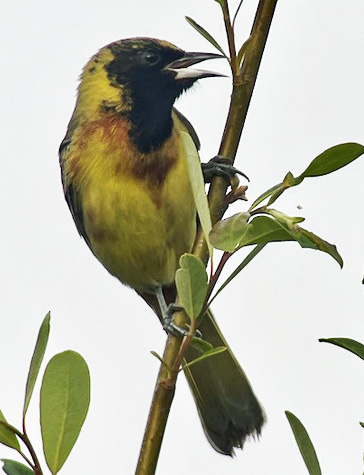 In early 2024, various rarities from the autumn of 2023 were still present, and set record late dates. MTY's first and only Yellow-crowned Night-Heron stayed at Stillwater Cover, Pebble Beach, until 31 March. The first-year Long-tailed Duck and the first-cycle Franklin's Gull found in Monterey harbor on 28 Nov and 2 Dec 2023, respective, were accommodating to 21 March (duck) and 5 Feb (gull), as attested by multiple photos. A Blackburnian Warbler in Pacific Grove's Greenwood Park lingered until 1 March. Three different Lucy's Warblers were seen during the winter months of 2024. The wintering Tropical Kingbird at Laguna Grande Park, Seaside, stayed until 2 May for its 5th full winter of local presence. In early 2024, various rarities from the autumn of 2023 were still present, and set record late dates. MTY's first and only Yellow-crowned Night-Heron stayed at Stillwater Cover, Pebble Beach, until 31 March. The first-year Long-tailed Duck and the first-cycle Franklin's Gull found in Monterey harbor on 28 Nov and 2 Dec 2023, respective, were accommodating to 21 March (duck) and 5 Feb (gull), as attested by multiple photos. A Blackburnian Warbler in Pacific Grove's Greenwood Park lingered until 1 March. Three different Lucy's Warblers were seen during the winter months of 2024. The wintering Tropical Kingbird at Laguna Grande Park, Seaside, stayed until 2 May for its 5th full winter of local presence.
Late winter rarities included a White-winged Dove in a neighborhood of Marina from 9 Jan-31 March, spending its time with flocks of Eurasian Collared-Doves (Jim DiMaggio, Steve Rovell, et al.). A fly-by Yellow-billed Loon from Pt. Pinos on 2 Mar (B.L. Sullivan) and another seen from a boat offshore Pt. Lobos on 8 Mar (James Maughn). A Sage Thrasher was rare to the coast, especially in spring, at Grimes Pt., Big Sur coast (Mark Chappell). A second-cycle Lesser Black-backed Gull was at Salinas R. mouth on 9 March. And a cornucopia of Orchard Orioles frequented Laguna Grande Park between 28 March and 20 April. Presumably these were a congregation of wintering orioles (also joined by Hooded Orioles at favored spots), and included at least two males and two (presumed) females. By late April, at least one male was singing and starting to molt into breeding plumage (photo right, 17 Apr, © Jeri M. Langham). |
|
|
Certainly the most unexpected appearance of the first half of 2024, and the 'Bird of the Year' to date, was in a private backyard in the San Benancio Canyon neighborhood, not far from Toro County Park. On 13 January, Michael Thompson saw a Common Redpoll at their feeder along Rimrock Canyon Road; Michael photographed it the next morning. Word of the observation and photo was posted, and multiple birders — locals and birders from as from distant counties — were permitted to view the feeder from the back yard over the next two days. The redpoll arrived during a cold weather snap (temperatures in the upper 40s-low 50s° F), but most of those who persisted for hours in the cold, including into the morning of 15 January, saw its return to the feeders (photos above 15 Jan, © D. Roberson).
This was a first record for Monterey County. It is a rarity anywhere in California, with just over 50 record since 1899. The vast majority has been in the northeastern corner of the State, and particularly at Tule Lake and Lower Klamath wildlife refuges. There have been winters when small incursions appeared just south of the Oregon line — 16 were collected in 1899, and 54 were seen in Dec 1985-Jan 1985 — but those seem to be 'once-a-century' situations. There was one at a feeder in Santa Cruz [24-25 Feb 2012] and a couple have reached California's Channel Islands or the Farallones, but it was not thought to be likely here in MTY. This was particularly true in winter 2023-2024, as there were not any southward irruptions in Oregon preceding this occurrence, nor elsewhere in the Northwest. It seems to be pure happenstance that it appeared here at all.
[A side note: this page in posted in July, just after the release of the American Ornithological Society's annual supplement to the official AOS Checklist of the Birds of North America. One of their new decisions this year was to lump all the of the world's redpolls — Common Redpoll, Hoary Redpoll, Lesser Redpoll (in Europe) — into just one species, now simply renamed Redpoll Acanthis flammea. We wonder when, or if, a Redpoll will appear again.] |
| |
Literature cited:
- Roberson, D. 2002. Monterey Birds, 2d ed. Monterey Audubon Soc., Carmel, CA.
- Roberson, D., and C. Tenney, ed. 1993. Atlas of the Breeding Birds of Monterey County, California. Monterey Audubon Soc., Carmel, CA.
I thank Rita Carratello and Michael Rieser for editorial comments on an earlier draft of this page.
|
|
Page created 13 June-23 July 2024
TOP
GO TO
HOME PAGE
TO MONTEREY
COUNTY
PAGE
TO BIRD
FAMILIES
OF THE WORLD
|




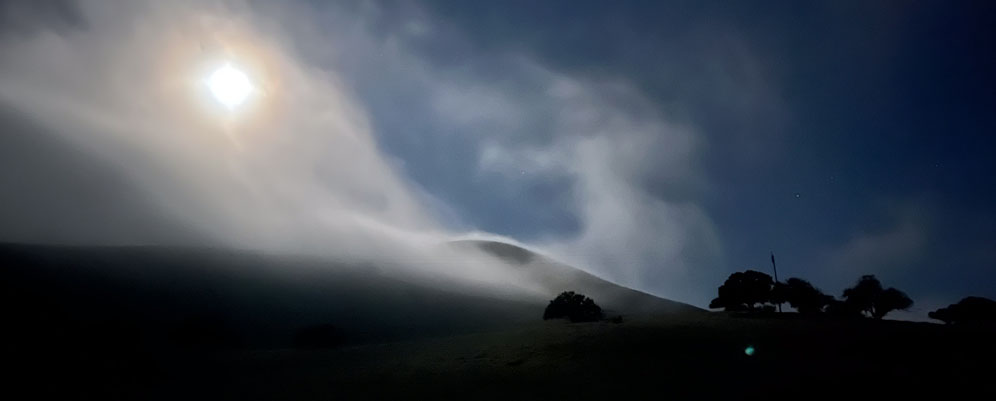
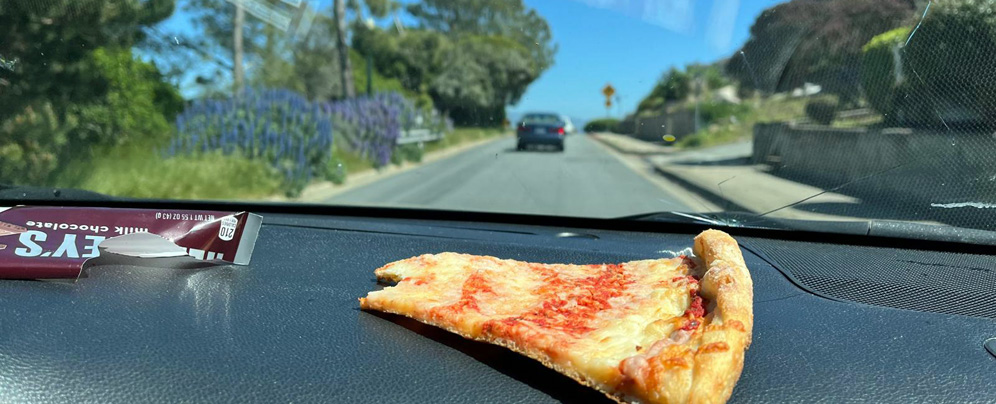


 In early 2024, various rarities from the autumn of 2023 were still present, and set record late dates. MTY's first and only Yellow-crowned Night-Heron stayed at Stillwater Cover, Pebble Beach, until 31 March. The first-year Long-tailed Duck and the first-cycle Franklin's Gull found in Monterey harbor on 28 Nov and 2 Dec 2023, respective, were accommodating to 21 March (duck) and 5 Feb (gull), as attested by multiple photos. A Blackburnian Warbler in Pacific Grove's Greenwood Park lingered until 1 March. Three different Lucy's Warblers were seen during the winter months of 2024. The wintering Tropical Kingbird at Laguna Grande Park, Seaside, stayed until 2 May for its 5th full winter of local presence.
In early 2024, various rarities from the autumn of 2023 were still present, and set record late dates. MTY's first and only Yellow-crowned Night-Heron stayed at Stillwater Cover, Pebble Beach, until 31 March. The first-year Long-tailed Duck and the first-cycle Franklin's Gull found in Monterey harbor on 28 Nov and 2 Dec 2023, respective, were accommodating to 21 March (duck) and 5 Feb (gull), as attested by multiple photos. A Blackburnian Warbler in Pacific Grove's Greenwood Park lingered until 1 March. Three different Lucy's Warblers were seen during the winter months of 2024. The wintering Tropical Kingbird at Laguna Grande Park, Seaside, stayed until 2 May for its 5th full winter of local presence.
